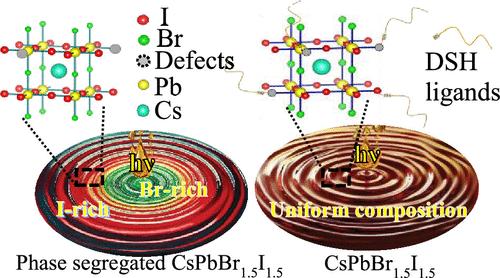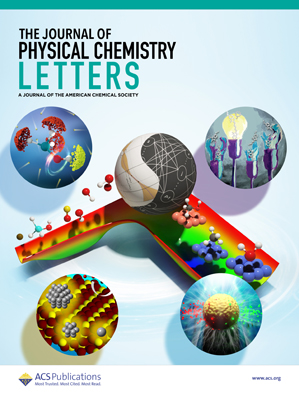Suppression of Light-Induced Phase Segregations in Mixed Halide Perovskites through Ligand Passivation
IF 4.8
2区 化学
Q2 CHEMISTRY, PHYSICAL
引用次数: 0
Abstract
Mixed halide perovskites (MHPs) are useful for tandem solar cells and optoelectronic devices due to their absorption and emission tunability over the whole visible spectrum and improved stability. However, one of the main challenges is phase segregation under continuous illumination or applied bias, which hinders their utilization for applications with full potential. Here, in this letter, we studied the phase segregation in MHPs, especially with a focus to CsPbI1.5Br1.5 under continuous 325 nm laser illumination through photoluminescence (PL) spectroscopy and a real-time video under illumination. We provided a remedy to prevent this unwanted segregation using the 1-dodecanthiol (DSH) ligand treatment. It is also observed that, during the relaxation under dark conditions, the PL characteristics can even be reverted to their original condition. Following ligand passivation, the CsPbI1.5Br1.5 film can sustain almost 4 min of continuous high-power 325 nm laser irradiation without any degradation or phase segregation, as studied through PL spectroscopy. Thereafter, a negligible phase separation occurs after exposure to laser light for 4 min. A real-time video demonstrates the efficacy of the DSH ligand in the suppression of halide dispersion. The observation is supported by density functional theory calculations, showing that DSH can effectively passivate halide vacancies to suppress unwanted phase segregation in halide perovskites under light illumination.

求助全文
约1分钟内获得全文
求助全文
来源期刊

The Journal of Physical Chemistry Letters
CHEMISTRY, PHYSICAL-NANOSCIENCE & NANOTECHNOLOGY
CiteScore
9.60
自引率
7.00%
发文量
1519
审稿时长
1.6 months
期刊介绍:
The Journal of Physical Chemistry (JPC) Letters is devoted to reporting new and original experimental and theoretical basic research of interest to physical chemists, biophysical chemists, chemical physicists, physicists, material scientists, and engineers. An important criterion for acceptance is that the paper reports a significant scientific advance and/or physical insight such that rapid publication is essential. Two issues of JPC Letters are published each month.
 求助内容:
求助内容: 应助结果提醒方式:
应助结果提醒方式:


